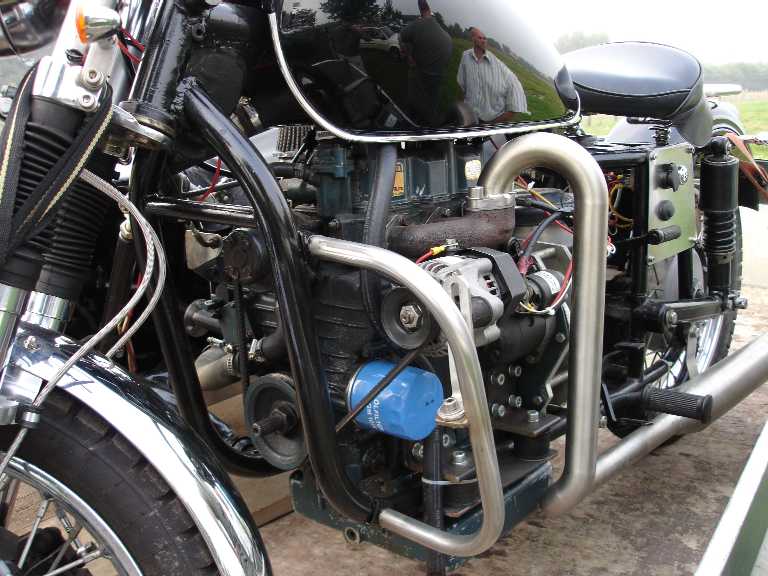This Motorcycle was posted to me and first put onto our Facebook page before going up here. Kawasaki fitted with a BSA A10 gearbox and, of course, a Kubota 600 cc engine. Save these shots to view in a bigger size. Thanks for submitting!
Bet it's economical to ride!


Nice painwork all over on this bike.


If you live north of the border keep you eye's peeled for this motorcycle. Or maybe it's in Germany?
The 'built in 1 week' Diesel Motorcycle by Mouse.
Mouse was forced through necessity to build his latest creation in seven days flat, fuel costs being very much on his mind. It features a Kubota 482cc twin engine from a refrigeration truck mated to a haft-drive and fitted into an older BMW R65 frame. No cutting of frame was necessary either! As always, Molly the dog was in the trailer behind!
There are intricate details of the build on our forum!
Cdog's Kubota D600 Diesel Motorcycle
This machine has been built by Cdog and consists of an extended custom Honda CX500 Frame complete with a Kubota D600 engine. Top speed we are told is in the mid 50's and the bike produces 13 horsepower producing a smooth ride with decent acceleration. Chat to Cdog on the forum for more info.
Cdog's Diesel powered motorcycle.
The Suzuki Kubota Diesel Electric Bike.
Kubota engine drives a 52volt 3 phase generator from a chopper which in turn powers two 24v motors which drive the rear wheel. Rectifying diodes can be seen under the front of the tank. I can testify that this machine goes well after seeing it being ridden about at the Hamm 2005 rally.
Kubota Diesel Bike
I saw this at Hamm 2005. Not sure what the frame is though or engine size.












